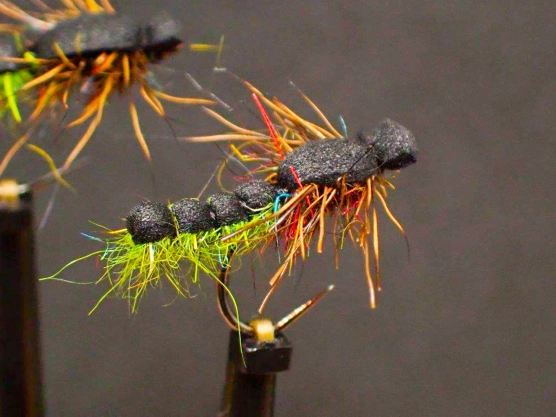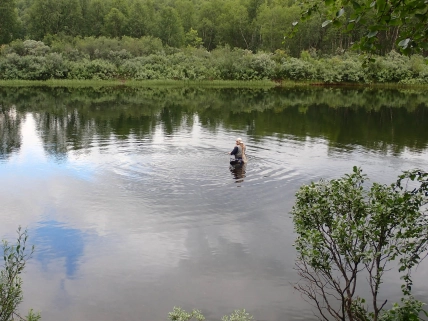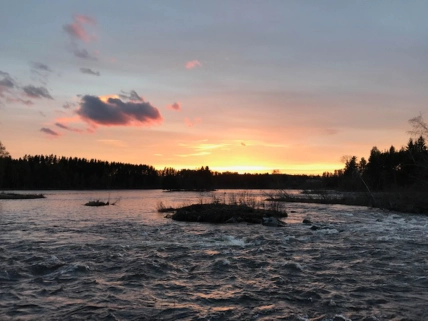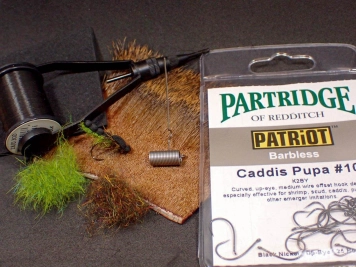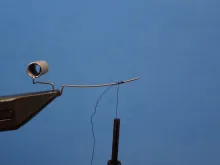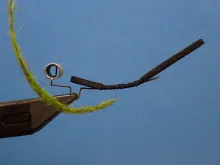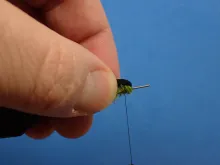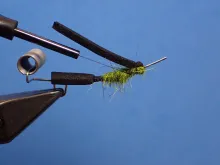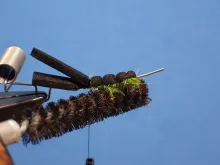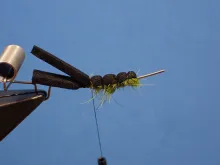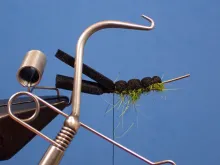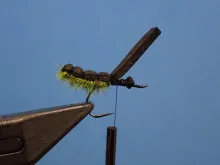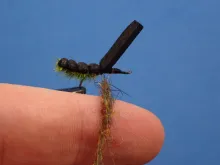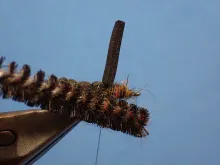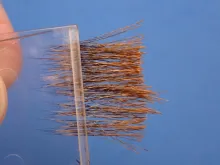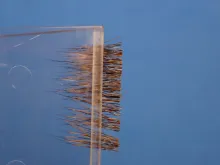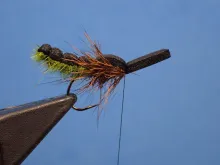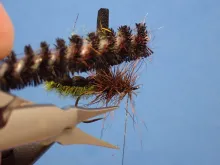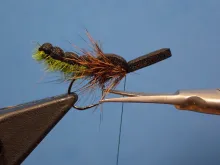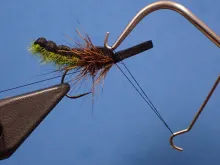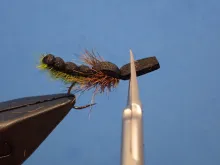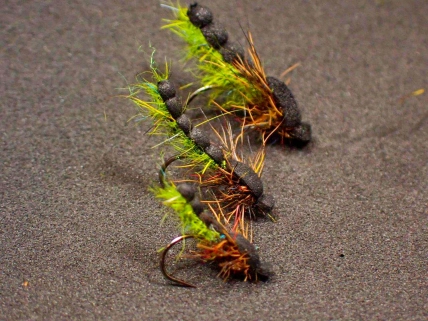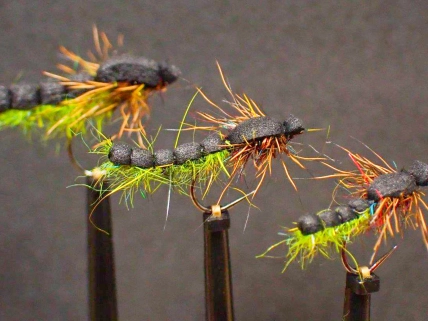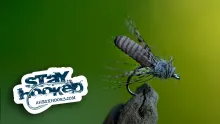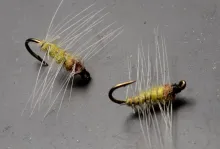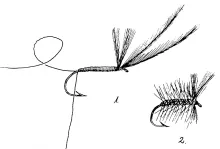This ragged looking caddis pupa from the hands of Norwegian Viggo Larsson will work well on both fast and calm water
The Swimming Caddis Pupa is a very efficient and good fly in many ways. It is tied so that it floats very well both in slightly rough rivers and on calmer water. It sits very nicely in the surface and gives a good silhouette on the water.
I fish mostly in rivers, preferably a little slow flowing, and then I fish it both dead drifted and stripped, depending on the conditions. On stillwater I fish it actively by stripping it in, but with variations in the stripping pattern.
I am so lucky that I have experienced what we like to call the “Pupa race”, and when that happens, it is a lot of fun and can yield some exciting fishing. But even when the fish are willing to take lots of pupae, it's not just casting it out there, believing you get a “free” catch. No, you have to work for the each fish.
You have to present the fly in the right place. The better and more careful you are in presenting, the greater your opportunity to catch the really beautiful specimens that are more selective and careful than the slightly smaller fish.
I had an exciting experience in a nice little river where the trout were very spooky, but feeding on pupae. I thought I fished very carefully and presented my fly well, but no fish took my fly.
I took a break and checked my leader and fly. I was fishing a 12 feet 4X leader, something that is usually good enough. But the water was crystal clear and flowing very slowly, so I pulled out an 18 foot leader with a 6X flourocarbon tip and tied it on.
I returned to the river, approached the bank calmly, found rising fish and calmly cast a little upstream so that I could start stripping in the pupa when it approached the fish.
Bang!
A fish immediately took the pupa as I started to strip it, and offered a nice fight.
Tying steps
The fly is easy to tie. It's done in two rounds: the extended body and then the fly on the hook.
The extended body tool used is from J:Son in Sweden, and can be found here.
Marc Petitjean's Magic Tool is widely available, but a bulldog clamp from your local office supplier can do too - or this DIY material clip.
Extended body
|
|
|
|
|
|
|
|
|
|
|
|
|
|
|
Finishing the fly
|
|
|
|
|
|
|
|
|
|
|
|
|
|
|
|
|
|
|
|
- Log in to post comments

